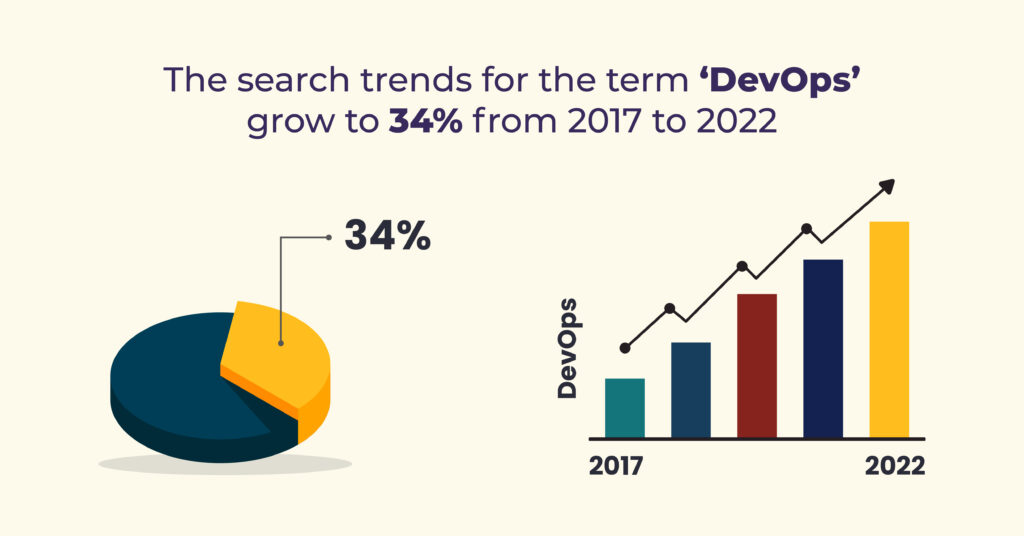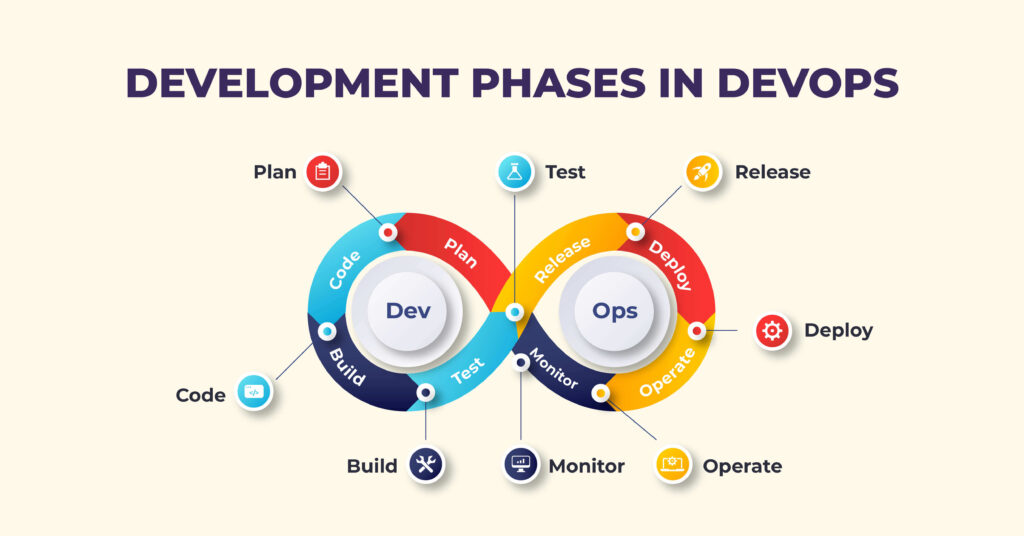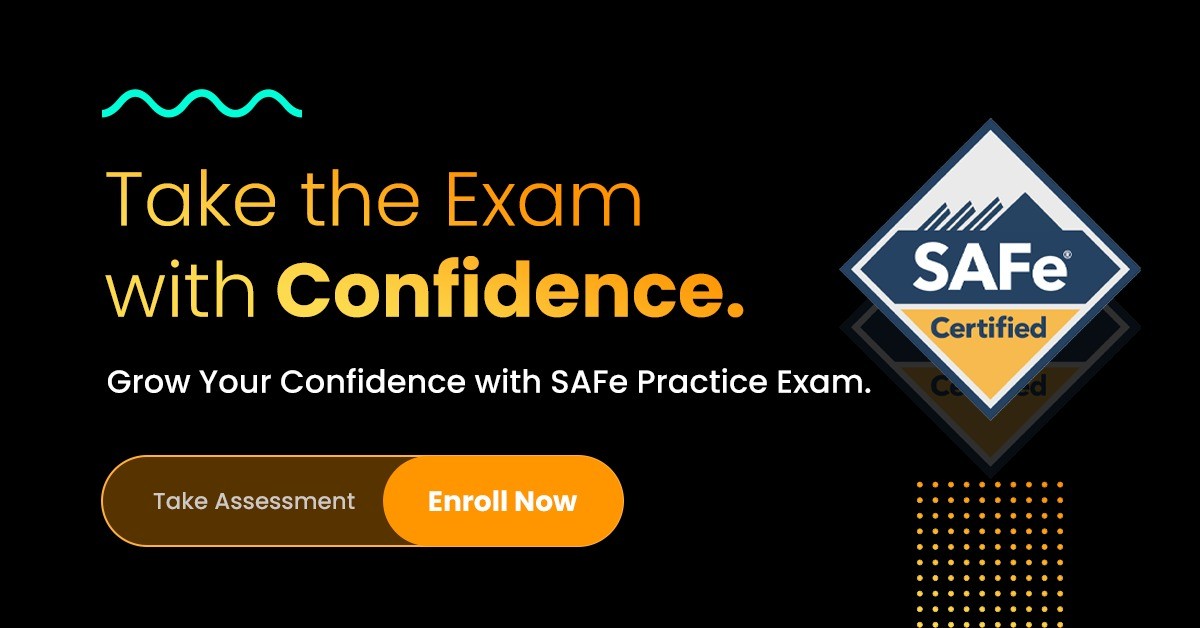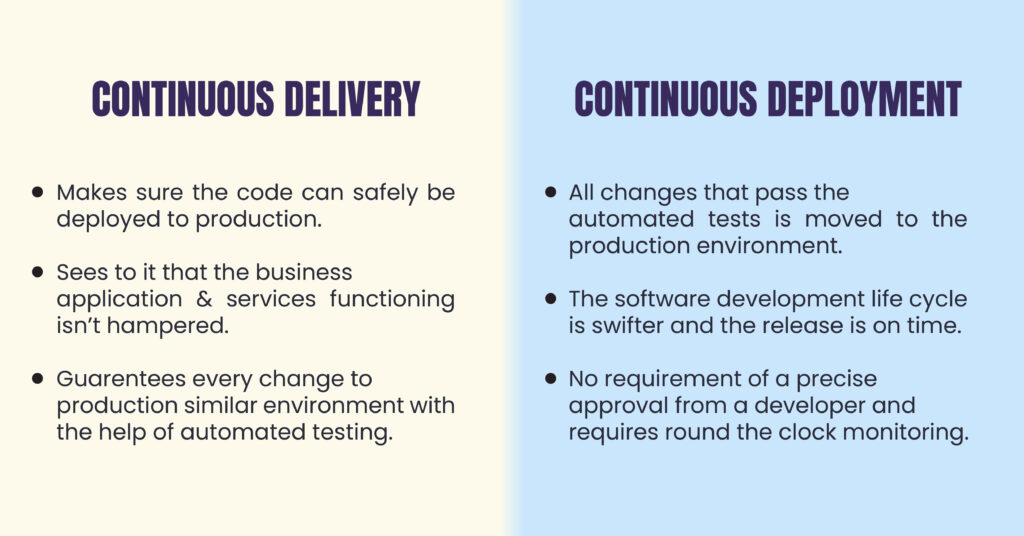
Agilemania
Agilemania, a small group of passionate Lean-Agile-DevOps consultants and trainers, is the most tru... Read more
![]() Get Your AI-Enabled Scrum Master Certification for Just ₹1,500 (Save 85%)!
Get Your AI-Enabled Scrum Master Certification for Just ₹1,500 (Save 85%)!
Scrum.Org
SAFe®
ICAgile
Scrum Alliance
Technical Agility
Kanban
Business Analysis
Project Management
AI-Enabled
Scrum.Org
SAFe®
ICAgile
Scrum Alliance
Technical Agility
Kanban
Business Analysis
Project Management
AI-Enabled

Agilemania
Agilemania, a small group of passionate Lean-Agile-DevOps consultants and trainers, is the most tru... Read more

DevOps is a career in tech that has a lot of opportunities for skilled professionals. The search trends for the term ‘DevOps’ grow to 34% from 2017 to 2023.
The rise in demand for DevOps jobs is a corollary to the increasing DevOps adoption rate by companies. While 42% of the organizations are applying DevOps at the project or multiple project level, 23% of the organizations are implementing DevOps at the enterprise level.
If a career in DevOps excites you, then you have to gain certification for that after the completion of DevOps Certification Training. We have designed 30 DevOps Interview Questions that will help you become confident. This list has a mix of beginner, intermediate, and advanced questions to gauge your knowledge.
Here we go!
DevOps is a combination of technical practices, tools, & cultural philosophies that help in the automation and assimilation of software development and IT services.

The technical and business benefits of DevOps are as follows-
Technical Benefits
Business Benefits
DevOps |
Agile |
| DevOps is a combination of technical practices, tools, and cultural philosophies that help in the automation and assimilation of software development and IT services. | Agile is a time-bound agile project management methodology that follows an iterative approach that builds software in increments from the start till the completion of the project. It breaks down the larger project into phases and then builds the requirements in timeboxed iterations which typically last 2-4 weeks. |
| DevOps helps in managing end-to-end engineering concepts | Agile helps in managing large complicated projects |
| Concentrates on regular testing and delivery | Concentrates on frequent changes |
| The fundamental goal is collaboration so no rigid framework | Agile can be applied along with Scrum, SAFe, or a sprint |
The acronym CAMS stands for-
Some of the Popular DevOps tools are-
Continuous Integration is the practice of automating the merge of code changes from numerous developers into a single repository.
In the DevOps context, it improves the software quality, delivery time, and detection of bugs in the primary stages of development.
The key components of DevOps are-
Git Bisect assists you in finding the commit that introduced a bug using binary search.
The three main KPIs in DevOps-

The different phases of development in DevOps are-
Test your DevOps expertise with our comprehensive assessment! Get insights, improve skills, and advance your career.
Try it now!
Continuous Testing in DevOps development lifecycle is testing at every stage of the
Using Git has the following advantages-
A pattern followed by organizations owing to herd mentality just because it is in vogue without any rationale is called Anti-pattern. Here are some of the antipatterns in DevOps-
Canary Release is a type of pattern that minimizes the risk of introducing a new version of software into the production environment. It is done by releasing the software to a smaller group of audience for testing before the larger release.
Implementing DevOps requires the below-mentioned prerequisites-

Here is the difference between Continuous Delivery and Continuous Deployment-
Continuous Delivery
Continuous Deployment
CBD is short for Component-based Development is a special approach to product development. This method helps developers to search for current tested, all-round, and verified components code that saves the developers time from creating the code from the beginning.
Resilience Testing is a software development process that tests an application to assess its behavior in an uncontrolled and unpredictable environment. It seems to it that the data and functionality is not lost in case of failure.
Version Control is the practice of tracking and managing changes to software code.
The principles of DevOps are-
Master essential skills, tools & strategies. Expert tips for acing interviews in 2025. Elevate your DevOps journey now!
Elevate your DevOps journey now!
Pair Programming is an agile technique where two programmers work together in one workplace. One is an observer while the other is a driver, both continuously track the project progress.
The different types of HTTP requests-
A Build is a method wherein a source code is assembled together to check if it works as a solo unit. During the build creation process, the source code will go through compilation, inspection, testing, and deployment.
Configuration Management is a systems engineering process for building consistency for a product’s traits throughout its life.
Selenium testing is used in DevOps for continuous testing. It supports functional and regression testing.
A container image is a lightweight, independent, executable package of a piece of software that includes everything needed to run it: code, runtime, system tools, system libraries, and settings.
Two-factor authentication is a security method where the user provides two ways of identification from separate categories.
A vagrant is a tool that can build and take care of virtualized environments for testing and developing software.
Post Mortem meetings are meetings that happen at the end of the project. It is conducted to discuss the failures, obstacles, and solutions to avoid them in the future. It is a critical assessment and review of a recently concluded project.
Forking Workflow is an open-source project enabler that provides service-side repositories to support the same.
Agilemania, a small group of passionate Lean-Agile-DevOps consultants and trainers, is the most trusted brand for digital transformations in South and South-East Asia.
WhatsApp Us

We will get back to you soon!
For a detailed enquiry, please write to us at connect@agilemania.com


